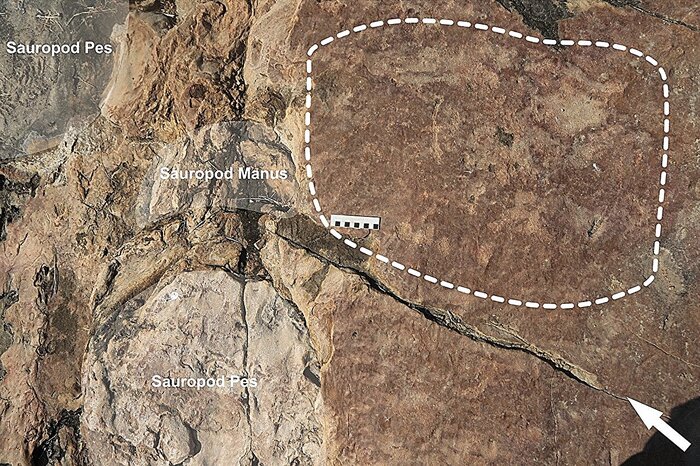A discovery of size, on all levels.
Portuguese and Spanish paleontologists unearthed the fossilized bones of a dinosaur in early August that could be the largest sauropod ever discovered on the European continent.
And unlike the usual finds of these huge skeletons, the fossil is particularly well preserved, allowing for full observation.
In 2017, a resident accidentally discovered several bones in his garden, while carrying out construction work in his house in Pombal, Portugal.
Very quickly, the portion of the garden was isolated so that excavations could be started, directed by the University of Lisbon.
New research could be conducted in the coming months on the site of their discovery as well as in the surrounding region.
According to the scientists, according to the size of the skeleton, the sauropod discovered was nearly 12 m high and 25 m long.
Sauropods are herbivorous and quadrupedal dinosaurs, recognizable by their long neck and long tail, which can reach up to 12 m high and 25 m long.
They are among the largest animals that have ever lived on Earth, with very poorly developed lower limbs, especially to be able to support their weight.
The specimen examined could weigh up to 50 tons.
Illustration of a sauropod.
Travis Tischler/AFP
These giants lived between the Upper Jurassic and Lower Cretaceous eras, that is, between 160 and 100 million years ago, and were first discovered in the Iberian Peninsula.
Several dinosaurs form the sauropod family, and the fossil found could correspond to a brachiosaurus, many of which populated the western region of Portugal.
For the moment, only the ribs have been exhumed, as well as the vertebrae.
According to Elisabete Malafaia, one of the leaders of the excavations and a researcher at the Faculty of Sciences of the University of Lisbon, it is not usual to find all the ribs of an animal like this.
According to the media Trust My Science, which relates his remarks, “this mode of preservation is relatively rare in the fossil archives of dinosaurs, in particular of sauropods, from the Portuguese Upper Jurassic”.
Other visible traces
The Pombal region seems to be a very prolific land for the discovery of fossilized remains.
As Elisabeth Malafaia points out, "research in the paleontological locality of Monte Agudo confirms that the Pombal region has an important fossil record of Upper Jurassic vertebrates, which in recent decades has provided the discovery of abundant elements very important for knowledge of the continental faunas that inhabited the Iberian Peninsula approximately 145 million years ago”.
The last skeleton of this species, considered to be the largest to have been discovered, was 18 m long, and would have lived in the Spanish Pyrenees mountains.
Recently, on the other side of the globe, other traces of dinosaurs have been discovered.
But this time, it is not due to excavations but rather to the drought.
In Texas, the high temperatures completely dried up the Paluxy River, which revealed footprints… 113 million years old.
According to researchers, it would be one of the largest in the world.
Usually, these flooded traces are also covered with sediment, which makes them inconspicuous.
Dinosaur tracks from 113 million years ago have been revealed in Texas after a severe drought dried up a river.
The footprints - left by a single acrocanthosaurus - had not been seen for more than 20 years.
Read more: https://t.co/nArBk0zCpJ pic.twitter.com/l0zJsUDZpj
— Sky News (@SkyNews) August 24, 2022
They have been attributed to two types of dinosaurs: the Acrocanthosaurus, a kind of maxi-lizard, and a sauropod.
The footprints of the sauropod, larger than a dozen human hands, would correspond to an individual 18 m high and 35 m long.
But these traces will soon be buried again by the rain and the return of the river.
According to Futura Planète, which relays the information, the park "will continue to protect these 113 million year old tracks, not only for current generations, but also for future generations", assured Stéphanie Salinas Garcia, one researchers deployed to examine these remains of an ancient time.



/cloudfront-eu-central-1.images.arcpublishing.com/prisa/DGAXPTVHVNGTDKDEMOMYHMEFHI.jpg)










